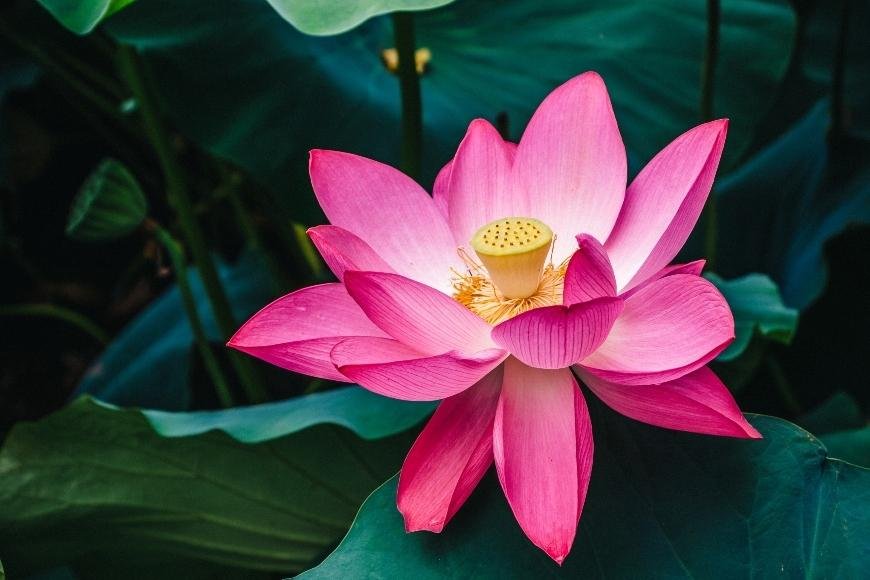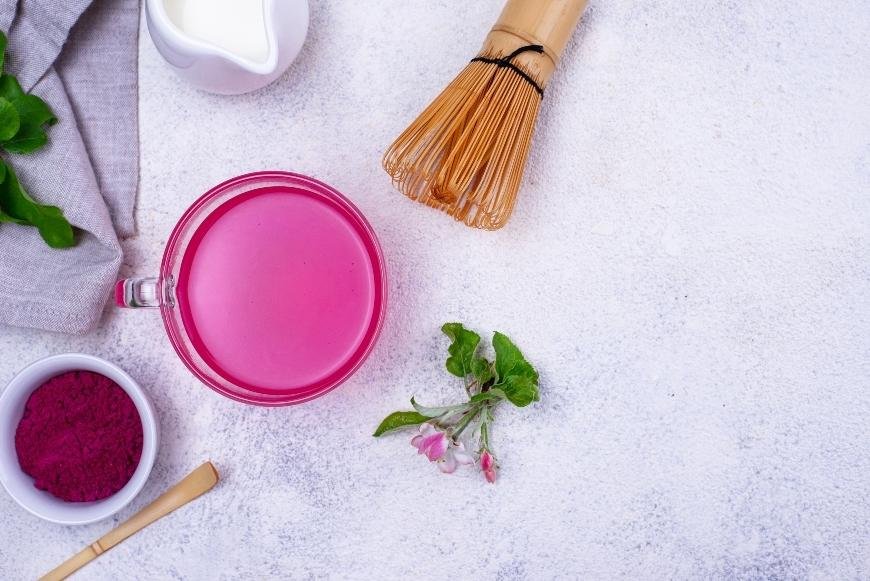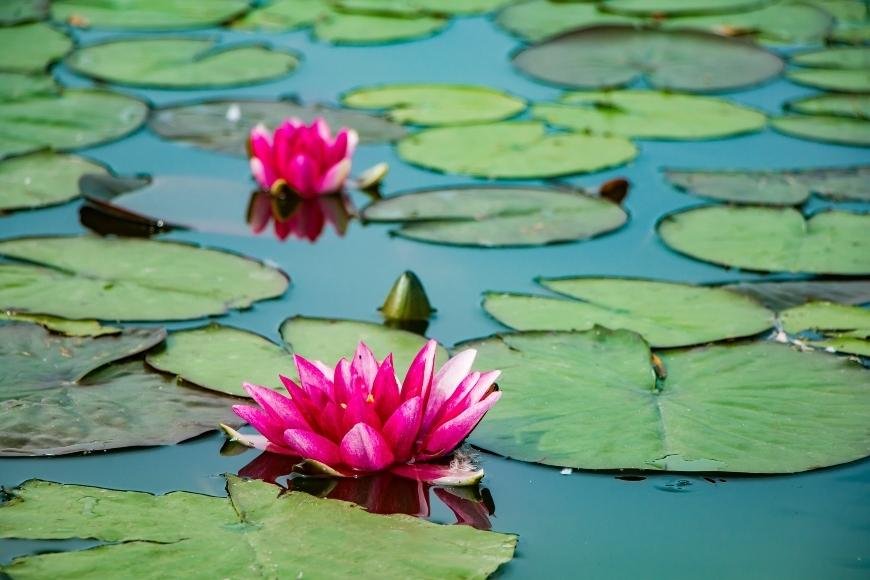What is Pink Lotus?
Explore what is pink lotus, its effects, safety, and legality. Learn about this aquatic plant's uses and preparation methods in our detailed guide.

What is pink lotus, you ask?
This bloom, a sign of loveliness and divinity for years, is not merely an ornamental aquatic plant. The pink lotus holds a secret that many young adults are beginning to explore in their quest for mind-altering experiences.
As we dive into the world of the sacred Indian lotus, you'll learn about its effects on those who partake in its consumption. From the intriguing sensations it provides to potential side effects and safety concerns, this journey will leave no stone unturned.
Curious about how to prepare this enigmatic flower? We've got you covered with various methods to unlock its potential. And if legality is your concern - don't worry; we'll touch upon that as well.
So come along as we uncover everything there is to know about "What is pink lotus" and embark on a voyage through ancient rituals and modern experimentation alike.
Table of Contents:
- What is Pink Lotus?
- The Effects of Pink Lotus
- Side Effects of Pink Lotus
- Is Pink Lotus Safe?
- How to Prepare Pink Lotus
- Legal Status of Pink Lotus
- Summary of Pink Lotus: Key Points to Remember
- FAQs in Relation to What is Pink Lotus
What is Pink Lotus?
Let's dive into the enchanting world of the Pink Lotus.
This beautiful plant, scientifically known as Nelumbo nucifera, has a rich history and fascinating properties that have captured human interest for centuries. Originating from Asia, it holds great cultural significance in countries like India, China, and Japan where it symbolizes purity and spiritual awakening.
Beyond its aesthetic appeal, this aquatic perennial also boasts psychoactive effects when consumed, earning itself a spot among other revered natural substances such as cannabis or magic mushrooms.
A Historical Glimpse at Pink Lotus Use
Pink Lotus has been used since ancient times for both medicinal and recreational purposes across various cultures. In traditional Ayurvedic medicine, parts of the plant were utilized to treat ailments like fever or digestive issues, while Egyptians employed it during religious ceremonies to induce euphoria and heightened awareness (talk about an ancient party starter.).
The Sacred Symbolism of Pink Lotus
It's no surprise that this captivating flower became entwined with spirituality due to its unique growth process: rising above murky waters each morning only to submerge again at nightfall - symbolic of enlightenment emerging from darkness. In Hinduism and Buddhism alike, the lotus represents purity of mind, body, and spirit; serving as an important reminder that we too can rise above life's challenges just like our floral friend here.
So, whether you're interested in the psychoactive effects of Pink Lotus or simply admire its beauty and symbolism, this aquatic plant is definitely worth exploring further. And if you're a fan of Pink Lotus, you may also want to check out other related plants like Blue Lotus or Sacred Lotus.
The Effects of Pink Lotus
Welcome to the mystical world of Pink Lotus. This enchanting plant has been used for centuries for its various benefits. But what exactly happens when you consume it?
Methods of Consumption
- Pink Lotus Tea: One popular way to enjoy the effects is by brewing a tea using dried flowers or leaves. This method allows for easy dosage control and offers a soothing experience overall.
- Tincture: Another option is creating a tincture by soaking the plant material in alcohol. This concentrated liquid can be added directly under your tongue or mixed into beverages for quick absorption into your system.
- Vaporizing: For those who prefer inhalation methods, vaporizing crushed petals at low temperatures can provide immediate effects without combustion-related risks associated with smoking traditional herbs.
It's important to remember that the intensity of effects can vary depending on factors such as dosage, individual tolerance, and preparation method. So start low and go slow.
If you're ready to explore Pink Lotus further, let's discuss its potential side effects in the next section.
Side Effects of Pink Lotus
While Pink Lotus is known for its pleasant effects, it's essential to be aware of potential side effects.
As with any substance, individual reactions may vary and depend on factors such as dosage and personal sensitivity.
Let's dive into some common side effects that users have reported:
Possible Nausea or Vomiting
In some cases, consuming Pink Lotus might lead to nausea or vomiting.
This could result from ingesting too much at once or having a sensitive stomach.
Drowsiness and Fatigue
The sedative properties of Pink Lotus can cause drowsiness and fatigue in some individuals.
If you're planning on driving or operating heavy machinery, it's best to avoid using this plant beforehand.
Mild Hallucinations
Rarely, higher doses of Pink Lotus might induce mild hallucinations similar to those experienced with other psychedelics like magic mushrooms.
Tolerance Buildup & Addiction Potential
- Tolerance buildup: Regular use may lead to tolerance buildup over time, requiring larger doses for the same effect. It's wise to take breaks between uses.
- Addiction potential: While not considered highly addictive by most experts, Pink Lotus can still become habit-forming for some users. Moderation is key.
Remember, everyone's experience with Pink Lotus will be different.
Begin with caution - start small and observe your body's response.
4. Is Pink Lotus Safe?
So, you're curious about the safety of Pink Lotus.
No worries.
We've got you taken care of with all the info needed for a knowledgeable choice.
Safety Profile
Pink Lotus has been used for centuries in various cultures and is generally considered safe when consumed responsibly.
Be mindful of the potential risks and side effects, as proper dosage is key to a safe experience.
Dosage Matters
As with any substance, proper dosage plays a significant role in ensuring a safe experience.
A trusted source for psychoactive plant information, provides guidelines on appropriate dosages based on user experiences.
Allergies & Interactions
If you have allergies or sensitivities to plants from the Nelumbo family, it's best to avoid consuming Pink Lotus as it may trigger allergic reactions.
Additionally , always exercise caution if combining Pink Lotus with other substances , especially those that affect your central nervous system . Know Your ensure safety , only purchase Pink Lotus products from reputable sources that provide high-quality , ethically sourced materials . Azarius is a reliable online shop that offers various Pink Lotus products to choose from. Start Low , Go Slow If you 're new to using Pink Lotus, it' s always wise to start with a low dose and gradually increase as needed . This approach allows your body time to adjust and helps minimize the risk of adverse effects .
In conclusion, while Pink Lotus is generally considered safe when used responsibly, it's essential to be aware of potential risks and take necessary precautions.
Stay informed, make smart choices, and enjoy your journey into the world of this fascinating plant.
5. How to Prepare Pink Lotus

Let's get started. We're about to explore various ways you can prepare and consume pink lotus to enjoy its effects. Remember, always use responsibly and be aware of your local laws.
Pink Lotus Tea: A Soothing Brew
One popular method is brewing a soothing pink lotus tea. To do this, simply steep dried petals or leaves in hot water for 10-15 minutes. Add honey or lemon if desired, sit back, relax and sip away.
Smoking Pink Lotus: A Classic Approach
If you prefer smoking herbs, pink lotus can be smoked alone or mixed with other herbs like damiana or cannabis (where legal). The key here is moderation - start small and adjust according to your preferences.
Pink Lotus Tincture: Concentrated Goodness
You can also create a potent tincture from pink lotus flowers or leaves. This involves soaking the plant material in alcohol for several weeks before straining it out to obtain a concentrated liquid extract. Take a few drops under the tongue or add it to your favorite beverage for an easy and discreet way to enjoy pink lotus.
Pink Lotus Wine: A Sophisticated Sip
For those with refined tastes, infusing wine with pink lotus petals creates a unique and delightful concoction. Pink lotus wine can be enjoyed on its own or paired with food for an elevated dining experience.
Always remember to drink responsibly and stay within your limits when indulging in this beverage.
Legal Status of Pink Lotus
Before diving into the world of Pink Lotus, it's crucial to know its legal status in your country. The good news is that, unlike some other substances, Pink Lotus remains mostly unregulated worldwide. Nevertheless, it's wise to be mindful of regional differences in the law as they can alter quickly. To avoid any unwanted surprises or potential legal issues, always do thorough research on the current regulations in your area before deciding to grow or consume this plant.
United States
In the United States, Pink Lotus is not subject to any criminal sanctions under federal law. No fear of federal prosecution for having or using Pink Lotus is warranted.
European Union
In most European countries, including the UK and Germany, there are no specific restrictions on possessing or using Pink Lotus either. However, it's always important to stay informed about local regulations.
Australia & New Zealand
Pink Lotus falls under somewhat stricter regulation in Australia and New Zealand due to its psychoactive properties being similar to those found in regulated plants like cannabis and magic mushrooms. Synthetic cannabinoids and hallucinogens such as 25I-NBOMe have been banned.
Stay Informed and Stay Safe
Remember, it's always better to be safe than sorry when dealing with any psychoactive substances. Keep yourself updated on the legal status of Pink Lotus in your country or region before deciding to grow, possess, or consume this plant. A responsible approach will ensure a positive experience for both you and those around you.
Summary of Pink Lotus: Key Points to Remember
Let's recap what we've learned about the fascinating Pink Lotus.
This enchanting plant has a rich historical background, with its use dating back thousands of years in various cultures. Pink Lotus is an aquatic plant that is also known as the Indian Lotus or Sacred Lotus.
Consuming the Pink Lotus can lead to a range of experiences, from relaxation and euphoria to even slight hallucinations - definitely an experience. Pink Lotus is often compared to Blue Lotus, which is another popular recreational drug.
Be mindful of the potential risks associated with use and ensure you are well-informed before proceeding. Some people may experience headaches, nausea, or dizziness after consuming Pink Lotus.
In terms of safety profile for Pink Lotus, it's generally considered safe when used responsibly but remember that individual reactions may vary. It's always a good idea to start with a small dose and see how your body reacts before consuming more.
- Preparation Methods:
- Pink Lotus tea or infusion
- Tinctures and extracts
- Vaporizing dried flowers
The legal status of Pink Lotus varies from country to country. Some places have no restrictions while others might regulate its sale or possession. It's important to be informed about local laws before diving into this mystical world.
So now you know. The beautiful Pink Lotus flower is not only an aesthetically pleasing addition to any garden but also offers unique experiences for those who choose to explore its effects. Just remember to always use it responsibly and stay informed about the legalities in your area. Happy exploring.
FAQs in Relation to What is Pink Lotus

As a young adult between 20 and 30 years old who recreationally grows and takes drugs, you may have heard of the pink lotus flower. This aquatic plant, also known as the Indian lotus or sacred lotus, has been used for centuries in traditional medicine and spiritual practices.
The pink lotus is similar to the blue lotus, which is also a popular choice among those who enjoy natural remedies and psychoactive substances. However, the pink lotus flower is said to have a more potent effect due to its higher concentration of alkaloids.
One of the most common ways to consume pink lotus is by steeping the lotus leaves in hot water to make a tea. This can induce a sense of relaxation and euphoria, as well as enhance lucid dreaming and meditation. Some people also smoke the dried petals or use them in aromatherapy.
It's important to note that while the pink lotus flower is legal in most countries, it may still have potential side effects and interactions with other substances. As with any drug or supplement, it's best to do your research and consult with a healthcare professional before trying it.
Overall, the pink lotus flower is a fascinating and versatile plant that has been used for both medicinal and spiritual purposes throughout history. Whether you're looking to enhance your creativity, reduce stress, or simply explore new experiences, the pink lotus may be worth considering.




































































































































